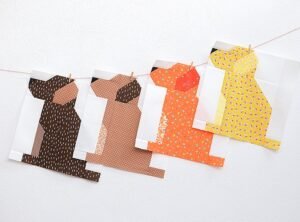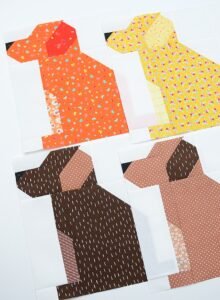Welcome to Fall Sampler Quilt Sew Along – Week 6: Finishing InstructionsTutorial—the final and most rewarding step of this cozy and creative quilting journey! If you’ve been following along from week one, congratulations! You’re now ready to put the finishing touches on your beautiful autumn-themed quilt. Whether you’re an experienced quilter or a dedicated beginner, this week is all about completing your masterpiece with care and precision.
In this tutorial, we’ll cover everything you need to know to finish your sampler quilt—from squaring up your quilt top to binding and final pressing. You’ll learn practical and beginner-friendly techniques, and by the end of this post, you’ll be wrapping yourself in your handmade quilt or proudly displaying it for the fall season.
This Fall Sampler Quilt Sew Along – Week 6: Finishing Instructions Free Tutorial is optimized to ensure your quilt looks polished and professional. These final steps can often make or break the overall appearance, so let’s make sure you’re fully equipped to end your quilting project on a high note. Let’s dive into the exciting process of transforming your quilt blocks into a finished heirloom!

1. Trimming and Squaring Your Quilt Top
Trimming and squaring your quilt is an essential step to ensure clean, straight edges and a polished final product. Before you even think about backing and binding, your quilt top needs to be neat and symmetrical.
Begin by laying your quilt top on a large, flat surface. Use a large acrylic ruler and rotary cutter to trim any uneven edges or extra threads. Take your time and measure carefully. You want all four sides to be straight and even.
Check that each corner forms a true 90-degree angle. If not, gently adjust your trimming until they do. Accuracy here helps make the binding process much easier and keeps your quilt from looking lopsided.
If your quilt top has grown slightly from all the piecing, that’s normal. It’s better to have a bit extra to trim off than to come up short. A clean edge makes layering much smoother.
This part of the Fall Sampler Quilt Sew Along – Week 6: Finishing Instructions Free Tutorial is often skipped by beginners, but don’t underestimate it. Taking the time to square everything now will save headaches later.
Once you’re happy with the shape, give your quilt top one final press using a steam iron. Smooth seams mean smooth quilting in the next step.
2. Creating the Quilt Sandwich: Backing, Batting, and Basting
Now it’s time to build the “quilt sandwich”—the foundation of your quilt’s final structure. This includes your quilt top, batting, and backing.
Start by choosing your backing fabric. A cozy flannel or cotton print that complements the autumn theme works beautifully. Cut it a few inches larger than your quilt top on all sides.
Next, lay your backing fabric wrong side up on a clean surface. Tape the edges down to keep it smooth and wrinkle-free. On top of that, place your batting, ensuring it’s also larger than your quilt top.
Finally, place your quilt top right side up, centered over the batting and backing. Smooth it out carefully to eliminate any bubbles or folds.
Now comes the basting. You can use safety pins, spray adhesive, or traditional basting stitches. The goal is to hold the three layers together securely for quilting.
Start basting in the center and work outward in all directions. This helps avoid shifting or puckering during quilting. Keep your basting evenly spaced across the quilt.
With this part of the Fall Sampler Quilt Sew Along – Week 6: Finishing Instructions Free Tutorial complete, your quilt sandwich is ready for the next exciting phase—quilting!
3. Quilting Techniques to Finish Your Masterpiece
Quilting is where your quilt top truly comes to life. The patterns you stitch not only hold everything together but add texture and charm.
You can quilt by hand or by machine. Machine quilting is quicker, especially for larger quilts, but hand quilting offers a classic touch that many love.
Decide on a quilting pattern. Straight-line quilting is beginner-friendly and works beautifully for sampler quilts. Stitch in the ditch—along the seams of your quilt blocks—for a clean, invisible finish.
For a more artistic look, consider free-motion quilting. Swirls, leaves, or stippling can complement the autumn motif beautifully.
Always start quilting from the center and work your way out to avoid bunching. Keep your stitches consistent in length and spacing for a professional finish.
Don’t rush this process. Take breaks and check your progress often. Your careful effort will show in the final product.
This section of the Fall Sampler Quilt Sew Along – Week 6: Finishing Instructions Free Tutorial is where your hard work starts to shine—enjoy the transformation!
4. Binding and Final Touches

The final step is binding your quilt, the beautiful edge finish that completes your project and holds it all together.
Start by cutting strips of fabric for your binding. Fold them in half lengthwise and press. Sew them together end-to-end to make one long strip.
Attach the binding to the front of your quilt using a ¼-inch seam allowance. Miter the corners neatly by folding them at a 45-degree angle.
Wrap the binding around to the back of the quilt and stitch it down by hand or machine. Hand stitching offers a neat, invisible finish that many quilters prefer.
Take your time around the corners and double-check that your stitches are secure. Binding gives the quilt a framed, polished appearance.
Once your binding is complete, inspect the entire quilt for loose threads or uneven stitching. Give it a final gentle press.
Congratulations! You’ve reached the end of the Fall Sampler Quilt Sew Along – Week 6: Finishing Instructions Free Tutorial. Your quilt is ready to be admired, gifted, or snuggled under during the chilly fall season.
Frequently Asked Questions
Q1: What if my quilt top isn’t perfectly square after piecing?
A1: Don’t worry—this is common! Trim carefully using a large ruler and ensure all corners are 90 degrees. Minor imperfections won’t be noticeable once quilted and bound.
Q2: Can I use spray basting instead of pins?
A2: Absolutely! Spray basting is a popular and time-saving method. Just make sure to apply it in a well-ventilated area and follow product instructions.
Q3: What kind of batting is best for a fall quilt?
A3: Cotton or cotton-blend batting works well. It provides warmth without too much bulk, and it drapes nicely for seasonal quilts.
Q4: How do I choose a quilting pattern?
A4: Match the quilting style with your skill level and the quilt’s design. Straight lines are beginner-friendly, while free-motion adds a decorative flair.
Q5: Should I wash the quilt after finishing?
A5: Yes, washing your quilt helps soften it and sets the stitches. Use a gentle cycle and air dry or tumble dry on low heat.
Q6: How can I store my quilt when not in use?
A6: Store it in a cool, dry place away from direct sunlight. Avoid plastic containers—opt for breathable cotton bags instead.
Thank you for joining the Fall Sampler Quilt Sew Along – Week 6: Finishing Instructions Free Tutorial. We’ve covered trimming, sandwiching, quilting, and binding—every step needed to complete your beautiful fall quilt. Whether you’re hanging it as seasonal décor or cozying up under it, your finished quilt is a true labor of love.
We hope this tutorial helped make your sewing journey easier and more enjoyable. If you found this guide helpful or have any questions, please leave your honest opinion and suggestions in the comments below. We’d love to hear your thoughts and see your finished quilts—happy stitching!



